Hello, and thank you to everyone who has signed up to this Substack. Welcome onboard.
It is 5.30 am in Kagoshima, the crows are singing their morning chorus, the karaoke drifting up from the snack bar on the floor below seems to be coming to a natural close, and a biblical amount of rain is falling.
After months of planning and training, the journey has officially begun. This time yesterday morning, Tom and I boarded a bright yellow, two-carriage diesel train and trundled south down the western edge of Kagoshima Bay. Forgive the immediate cliche, but it was pure Ghibli. With summer fast approaching, the line was overgrown with bamboo, and the track was swallowed up behind us as soon as the train had fought its way through. It was the vegetal version of that scene in Spirited Away.
Two-carriages became one as we continued south, until eventually we reached Kaimon Station — five metres of concrete surrounded by farmland. The station sits at the base of Mount Kaimon, a 924-meter volcanic nipple at the southwestern tip of Kyushu, and one of the hyakumeizan (100 famous mountains of Japan). I first noticed the mountain on the ferry to Yakushima in 2021, and when planning the route, knew I wanted it to be our start point.
The climb took about three hours all in. Cycling shorts are not the most comfortable for hiking, but the collection of preloved walking sticks at the trailhead was a nice touch. The path was well-trodden volcanic rock and large boulders, with a healthy abundance of Cretaceous vegetation: big ferns and heavy sheets of moss clinging to every damp surface. The air was humid, tropical.
Thick cloud roled in on a fast wind as we approached the summit. A cheery lady at the start told us it might rain, so we didn’t spend long at the top — enough time for a couple of onigiri each (tuna-mayo and spicy mustard greens, a Kyushu favourite). We had reached our starting line, 924 meters up. To the north, 3,000 kilometres away, our finish. If the weather had been kinder, this might have been a moment of grander reflection about the journey ahead. Instead, we hurried down the mountain to the warmer flats below.
Our final task before we could begin the cycle proper was to dip our wheels in the sea. It was now 2 pm and we had about 60 km to get to Kagoshima. After a quick swim, we packed everything onto our bikes and struck out north through a landscape of newly planted rice paddies and dormant volcanoes.
The road ran parallel to the train track and Kagoshima Bay, giving us views across to Sakurajima — Japan’s most active volcano — gently puffing away. With a decent tailwind and smooth roads, it was a brilliant first day of cycling. The bikes were running well, the packs were sturdy and didn’t shift too much in the wind. We made it to Kagoshima in good time.
All that was left was dinner at a local tonkastu restaurant called Kurobuta. Much of Kagoshima’s culture stems from its proximity to the volcano (the city’s tourism slogan is “Magma City, Igniting Dreams”), and due to the near constant eruptions, everything is covered in a fine layer of black ash. The food leans heavily on this, with many dishes dyed with black sesame. Of particular pride: the black pork katsu, made with a cut of the Kagoshima-endemic kurobuta pig.
Back to the present, the rain has begun to ease, but the forecast today is grim. I don’t think many photos will be taken. We have 75km and 1,200 meters of climbing ahead of us, and hopefully a warm bath and good food waiting at the end.
Thanks for reading, more soon,
Oscar
p.s. please subscribe to get this newsletter straight into your inbox, and share it with anyone you think might enjoy it. You can also follow along on Instagram, where I’ll share more photos and video.
Stats
Distance covered: 62 km
Vertical: 1,300 meters
Onigiri eaten: 3
Studio Ghibli References: 1


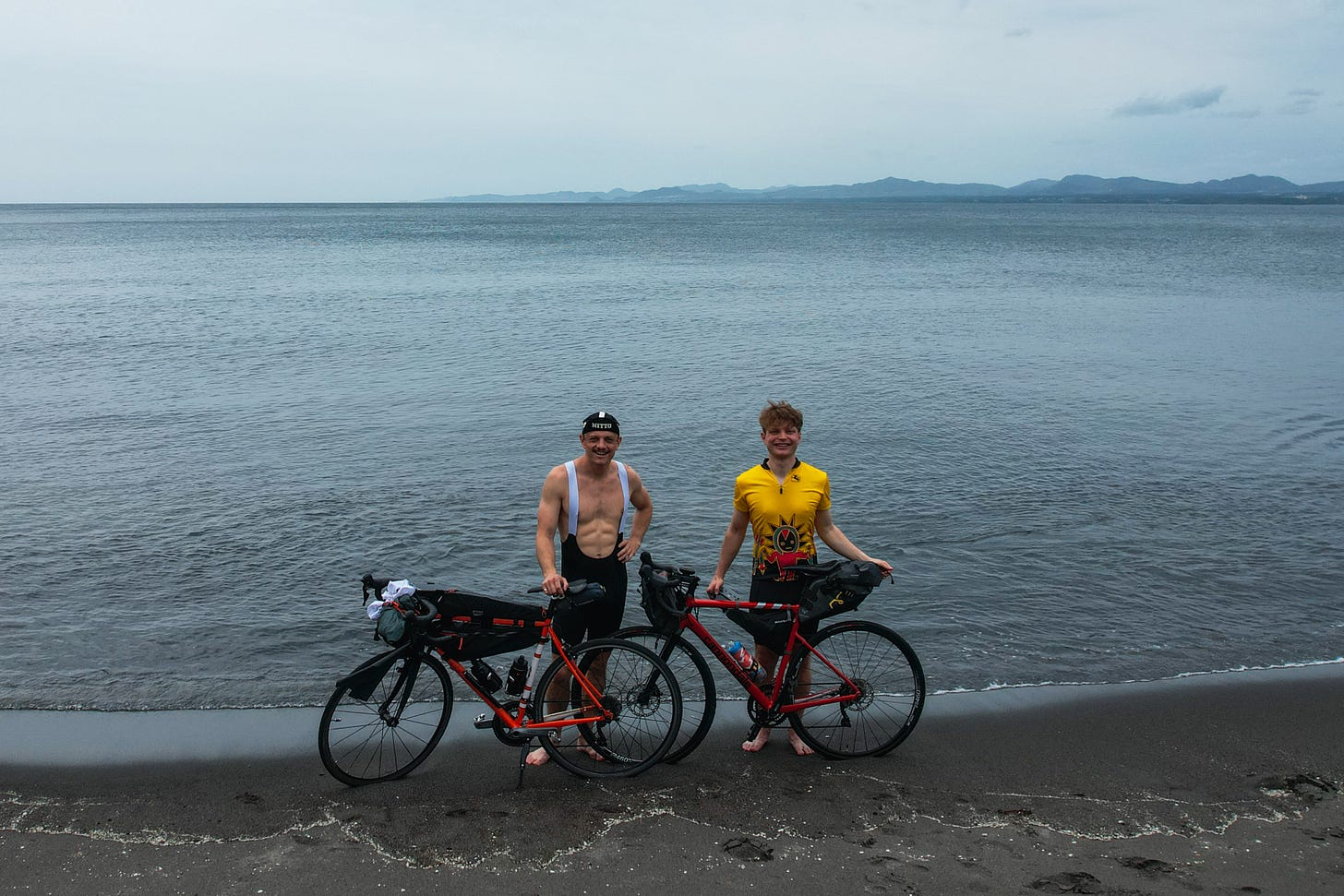

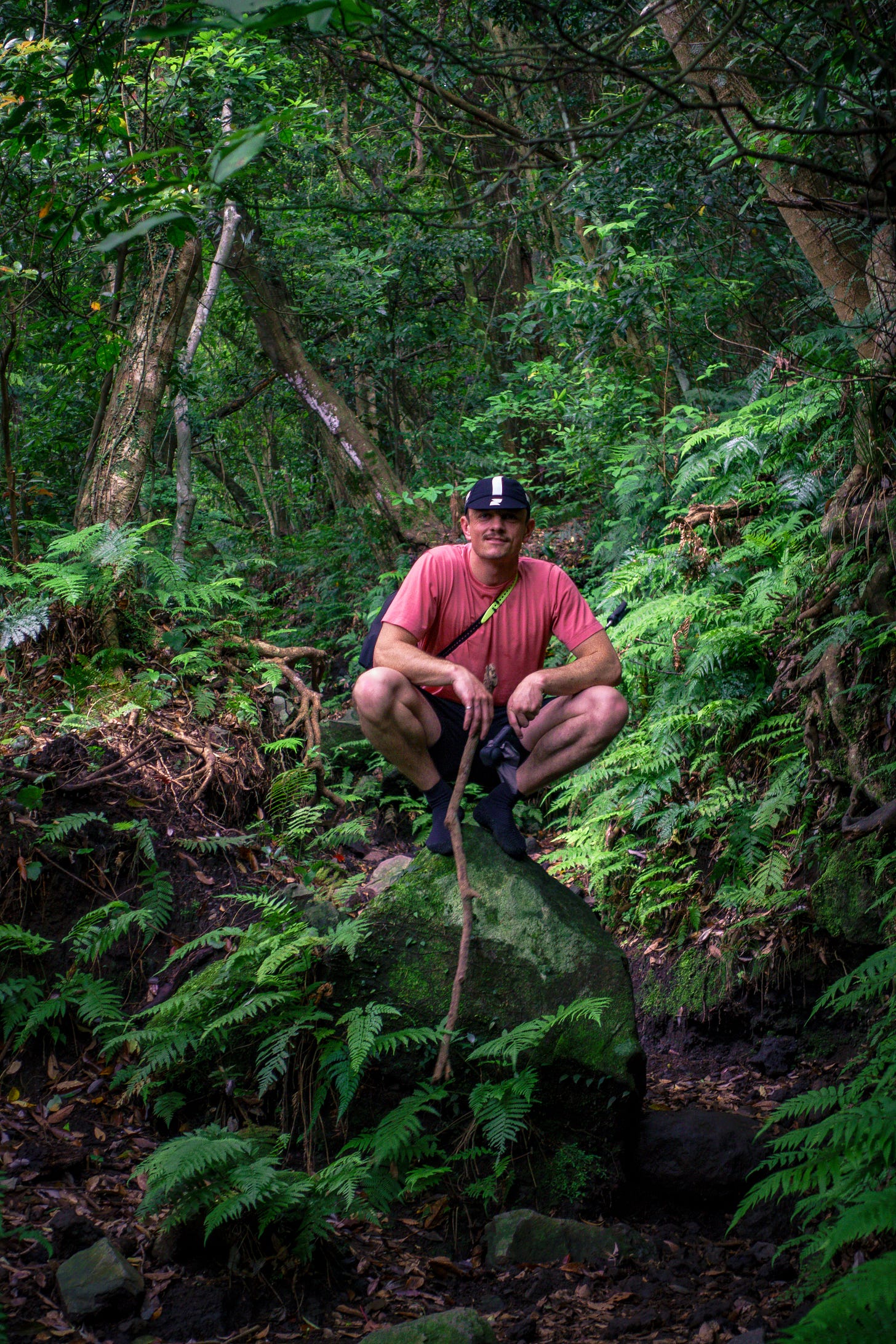
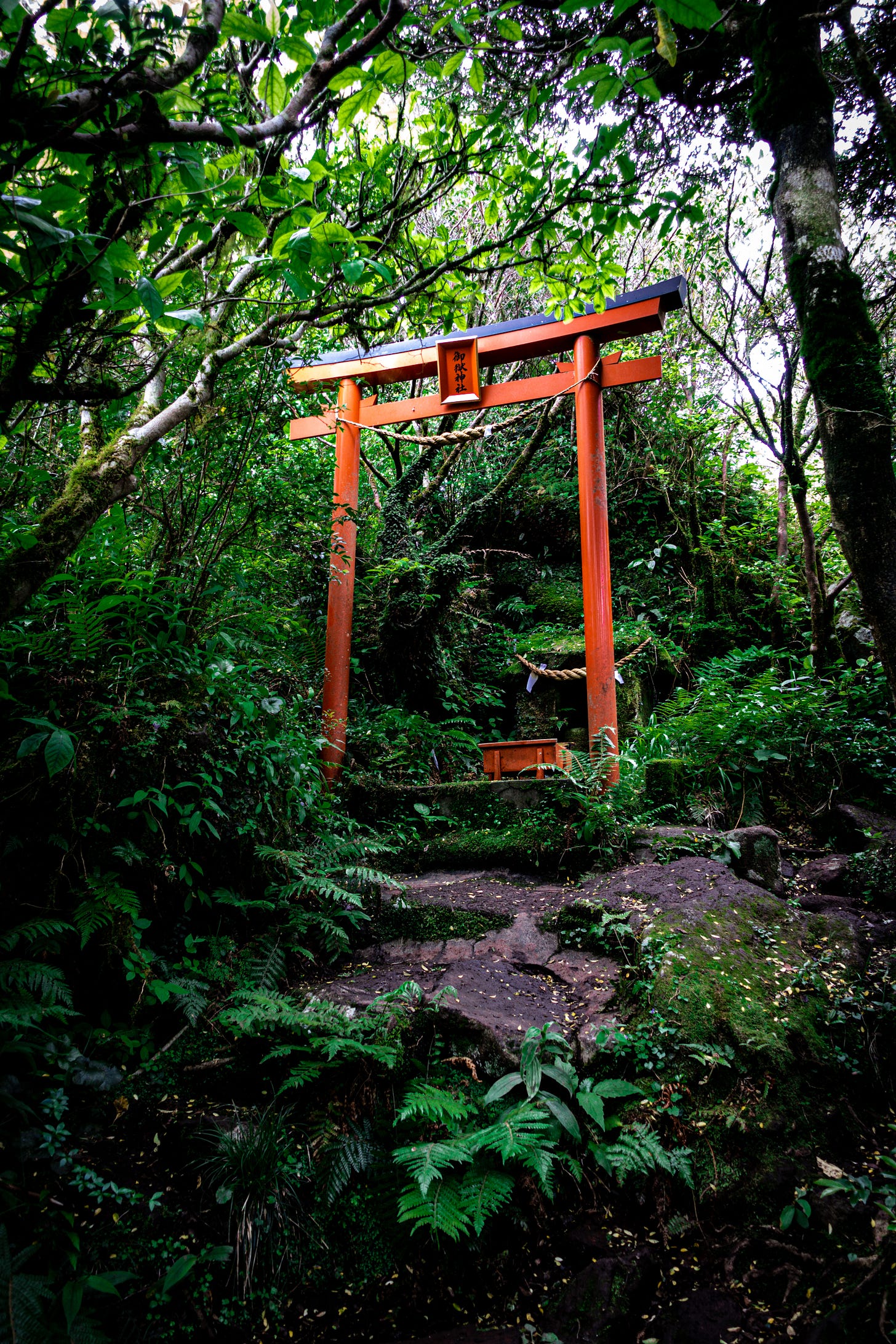
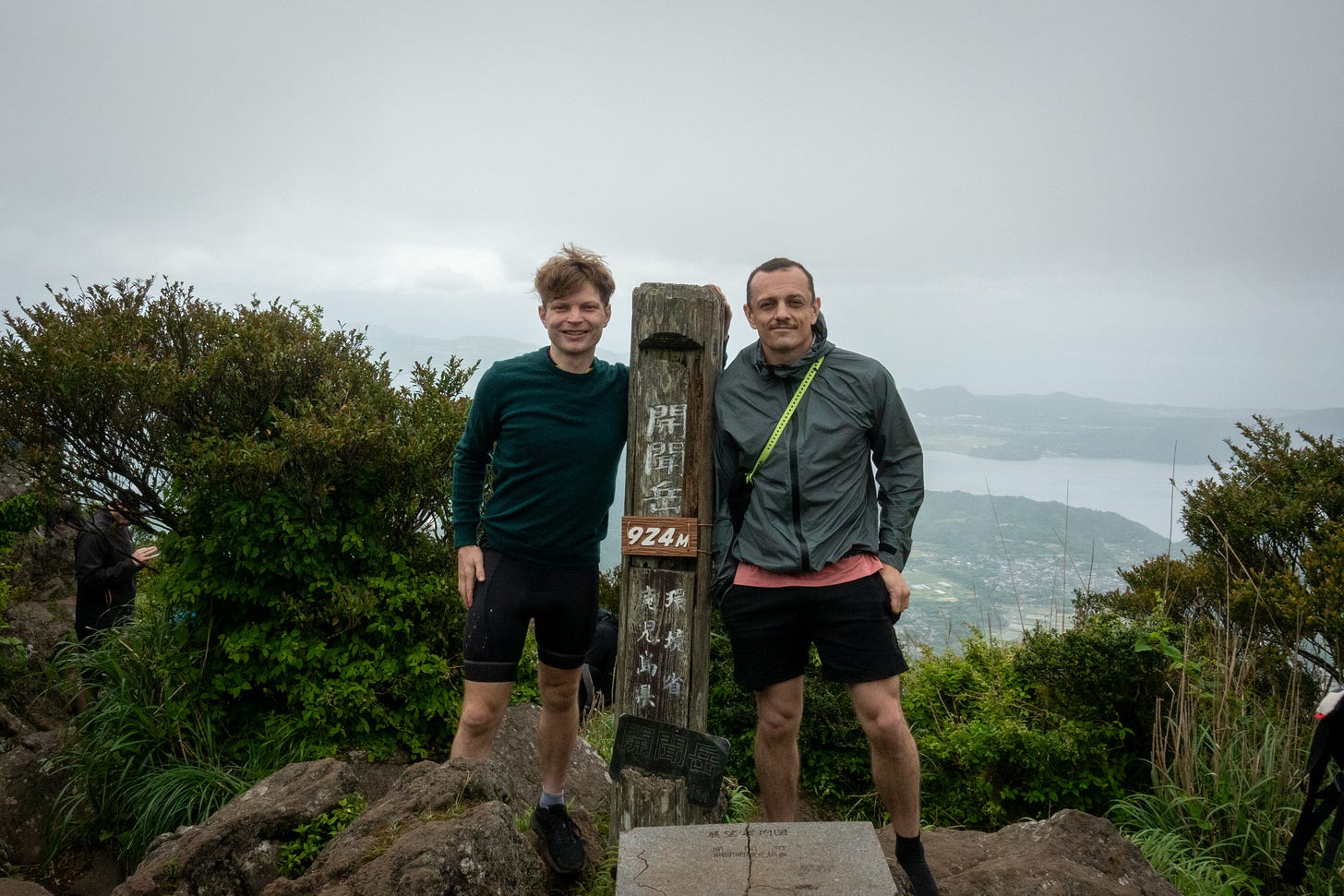
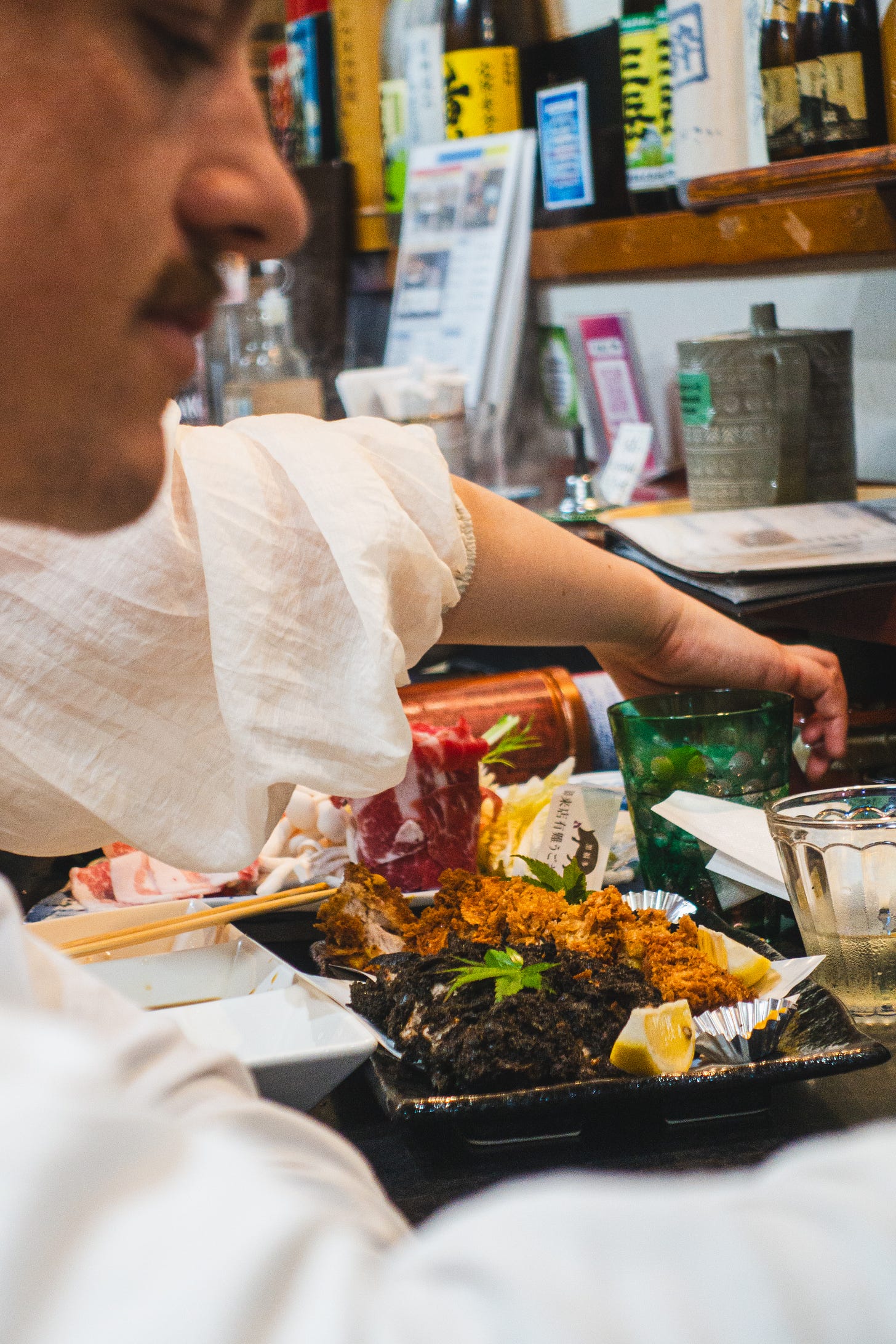
Those are some impressively compact bags for a month of travel!
So hyped for more updates! Great to see you writing again Oscar :))